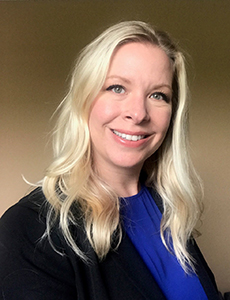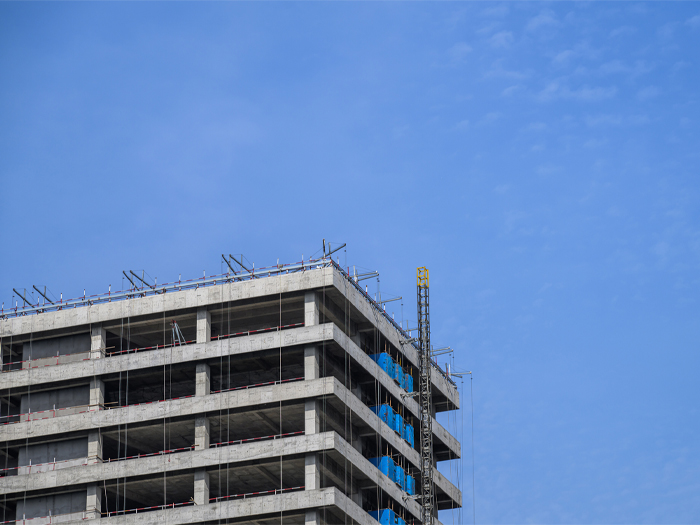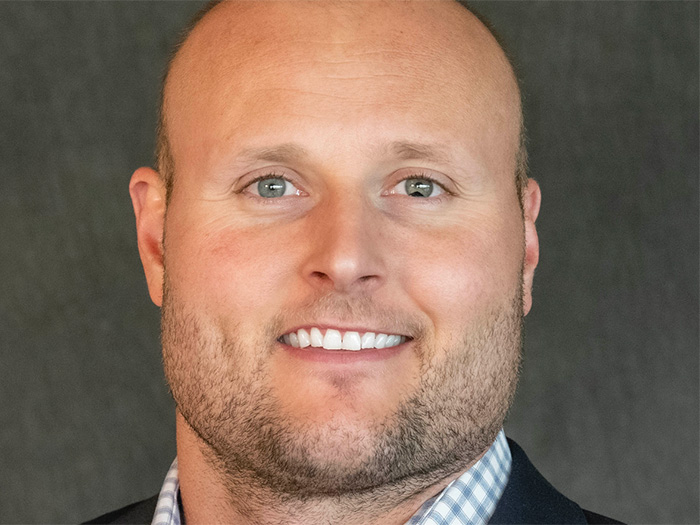Sponsored Content by BHSI
Engineering a Sustainable Approach to Homebuilder’s Risks

Homebuilders should be able to focus on building quality homes, without worrying where their insurance is coming from year to year. But for many homebuilders, that’s not been the case in the past. Berkshire Hathaway Specialty Insurance’s Katie Beck, Assistant Vice President of Construction Underwriting and Head of Homebuilders, and Ron Chenault, Assistant Vice President of Construction Risk Control, discuss how BHSI provides a new approach that gives homebuilders welcome certainty in their insurance programs.
Editor: The homebuilders insurance market is traditionally very challenging – much more so than commercial building. Why is that?

Katie Beck, Assistant Vice President of Construction Underwriting and Head of Homebuilders
Katie Beck: First, there’s the nature of the business and the buyer. Homebuilders face a different level of customer expectations and need to provide a different level of customer care. A homeowner can be more sensitive to quality issues than a commercial buyer. This is the largest purchase they will ever make, so they are very invested in the property.
In addition, a homebuilder may build hundreds or thousands of homes a year, if they are a national builder. Having this number of individual customers/owners requires homebuilders to have a different set of skills when dealing with their customers as compared to a commercial builder.
Ron Chenault: When a homebuilder has a claim, the claim could be endemic throughout an entire development. Because of similarities in home builds, a problem with a single type of home may ultimately be widespread over the communities, states or regions where such homes have been built.
Editor: What are some of the unique challenges in underwriting these risks?
KB: Along with the potential severity of claims, homebuilder claims tend not to materialize immediately upon completion of the home, which creates a challenge around having adequate data to analyze. While homebuilders typically provide 10 years of past loss history for underwriting, homebuilder claims typically do not arise until about 8-10 years after a home is sold.
The rapid pace of change in the homebuilder industry is a challenge. The methods and materials used by homebuilders continue to advance. New technology and materials change both the way homes are built and the components used to build them. Legislation and regulations are in constant flux. The industry is also wrestling with a shortage of qualified workers.
Risks such as these pose a challenge to underwriters and their ability to properly underwrite a difficult market. As a result, homebuilders have seen inconsistent and limited capacity over the years.
Editor: What is BHSI’s approach?
KB: We see an opportunity to create a new paradigm in insurance for homebuilders, one that rests, most of all, on creating a close and trusted partnership with our customers. The better we know our customers and their business, the better we can be at bringing certainty to them. We’re committed to doing that – and our customers see it. We combine a clear and innovative policy form with a proactive, truly collaborative approach to risk control and claims.
Editor: Tell us about your policy form.
KB: We have taken great care to provide simple and clear policy wording that includes all relevant terms without reference to extracontractual documents. All terms and conditions of the coverage are found within the form. We’ve eliminated grey areas that have persisted and been problematic for homebuilders. This gives our insureds certainty in terms of the insurance provided, not only at the time when they purchase the policy, but continuing into the future when the potential claim happens.
Editor: What is BHSI doing from a risk control standpoint?

Ron Chenault, Assistant Vice President of Construction Risk Control
RC: The homebuilding industry has been evolving, becoming increasingly sophisticated in its risk management approach, particularly over the last 10 to 15 years. I work closely with our customers and with the overall homebuilder industry to understand what’s being done from a risk management and customer care perspective. I then share that with our underwriters so they can fully understand the technical risks that come with the potential customer.
I also see my role as a catalyst providing information on best industry practices relative to quality and safety. We hope that with this type of information our customers will benefit by developing their own best practices and raising their own risk management game.
Editor: What are some of the trends making homebuilders “better” risks?
RC: One important trend we’re seeing is homebuilders integrating aspects of commercial building into residential building to elevate risk management. An example: foundations. We’re seeing builders being proactive in conducting more extensive geotechnical investigations as they design their foundation slabs. This is important since a builder might be building on a plot many years after it was purchased. They need to understand the soil horizons and draw solid conclusions in order to develop a foundation that will perform as intended a decade or so down the road.
Editor: Any other key trends in risk control?
RC: Homebuilders welcome a risk control partnership. They realize risk control is not just about inspecting rather it’s about utilizing all resources to construct better homes. In turn, this enhances their own and the overall industry’s ability to manage risk.
They appreciate that we can connect them with other industry stakeholders. By introducing builders to the manufacturers of key components – items like exterior membranes or water intrusion protection products – the homebuilders have a chance to learn more about such products and pass that information along to their own workforces.
We’re also seeing new emphasis on training and education. Homebuilders are seeking the next generation of construction professionals and actively training people to be future leaders of their companies. Online tutorials enhance jobsite safety. Animated illustrations can help to clearly demonstrate building and safety practices where there are language barriers.
KB: Because these risks evolve so much from the time a policy is written to the time a claim will come in, it is important for us to continue learning with our customers and to stay abreast of the industry and understand what’s being done from a risk management standpoint. That’s why as underwriters we work so closely with our risk control team and our customers.
Editor: What is BHSI’s approach to claims and how is it different from what a homebuilder may have experienced in the past?
KB: Builders that have gone through construction-related claims recognize the challenges posed by such claims. No one wants to face a claim, but when they come, we view them as an opportunity to demonstrate our commitment to our customer and to underscore our partnership.
While many insurers choose to use TPAs for homebuilder losses, we utilize our own claims team. At the end of the day, claims handling is the product our customers purchase. That’s why we involve our claims team early on during our underwriting meetings with customers and brokers. We work hard to be forthright, transparent, and proactive in handling claims so that homebuilders gain a better understanding of their losses from day one.
The homebuilder industry’s unique risks can make it a challenging business to underwrite successfully. To reduce such challenges, we’re working together with our customers to elevate risk management and risk control. This approach helps us to better underwrite these exposures and handle claims in a way that will provide the certainty and long-term insurance partnership homebuilders need – and deserve.
To learn more about BHSI’s coverages and areas of expertise, visit https://bhspecialty.com/.
This article was produced by the R&I Brand Studio, a unit of the advertising department of Risk & Insurance, in collaboration with Berkshire Hathaway Specialty Insurance. The editorial staff of Risk & Insurance had no role in its preparation.










